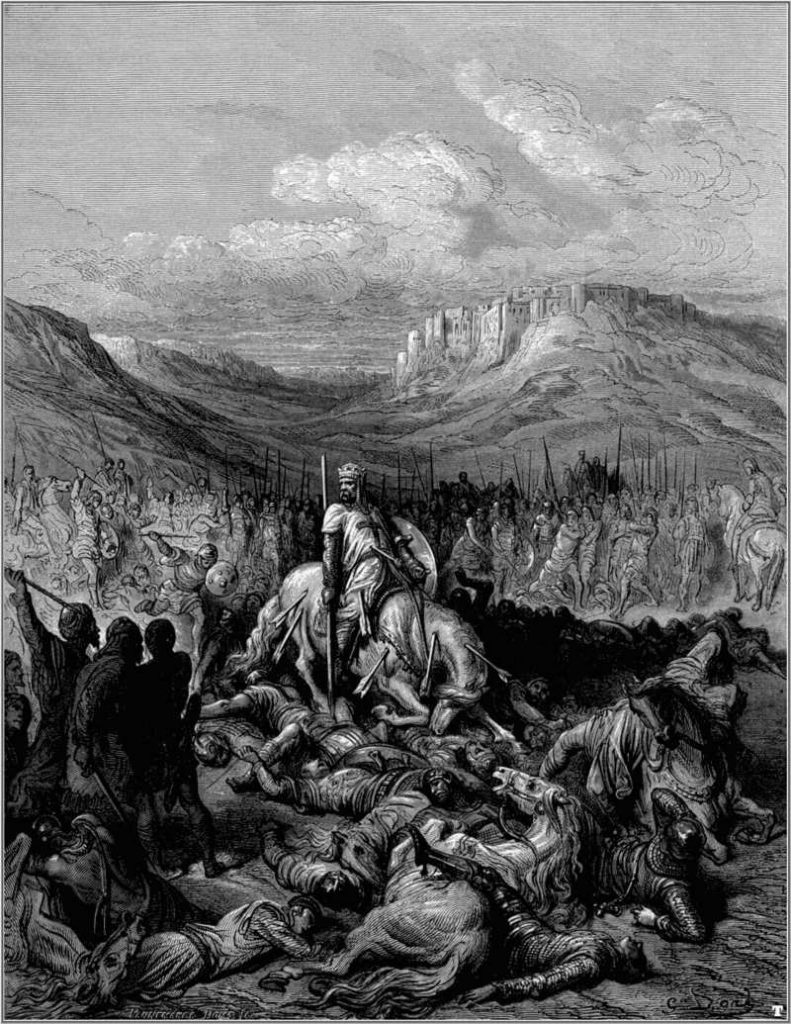The truce made with the king of Jerusalem was broken at the same time by both Christians and Mussulmans. Renaud de Chatillon continued his incursions upon the territories of the infidels, and only replied to the complaints of Saladin by new violations of treaties. A Mussulman army, which the sultan of Damascus had sent to the assistance of the count of Tripoli, advanced into the country of Galilee, whither five hundred knights of the Temple and St. John hastened to defend the Christian territory, and give battle to the Saracens. They were speedily overwhelmed by the numbers, and almost all perished on the field of battle. . . . Above all the rest, nothing could equal the heroic valor of Jacques de Maillé, a knight of the Temple. Mounted on a white horse, he remained alone in the field of battle, and fought on, surrounded by heaps of slain. Although hemmed in on all sides, he refused to surrender. The horse which he rode, worn out with fatigue and exhausted by wounds, sunk under him, and dragged him with him; but the intrepid knight arose, lance in hand, covered with blood and dust, and bristling with arrows, and rushed upon the ranks of the Mussulmans, astonished at his audacity; at length he fell, covered with wounds, but fighting to the last. The Saracens took him for St. George, whom the Christians believed they saw descend from heaven to join their battalions. After his death the Turkish soldiers, whom an historian calls the children of Babylon and Sodom, drew near with signs of respect to his body, slain by a thousand wounds; they wiped off the blood, they shared the rags of his clothes and the fragments of his arms, and, in their brutal excitement, evinced their admiration by actions that make modesty blush when speaking of them.
The grand master of the Templars, with two of his knights, were all that escaped from the carnage. This battle was fought on the 1st of May, 1187. In the season, says an ancient chronicle, in which flowers and roses are gathered in the fields, the Christians of Nazareth found nothing but the traces of slaughter and the mangled bodies of their brethren. They buried them in the church of St. Mary, repeating these prophetic words: “Daughters of Galilee, put on your garments of mourning; and you, daughters of Sion, weep over the ills that threaten the kings of Judah.”
Joseph François Michaud, The History of the Crusades, trans. W. Robson (New York: Redfield, 1853), 1:415-6.
Short Stories on Honor, Chivalry, and the World of Nobility—no. 665










